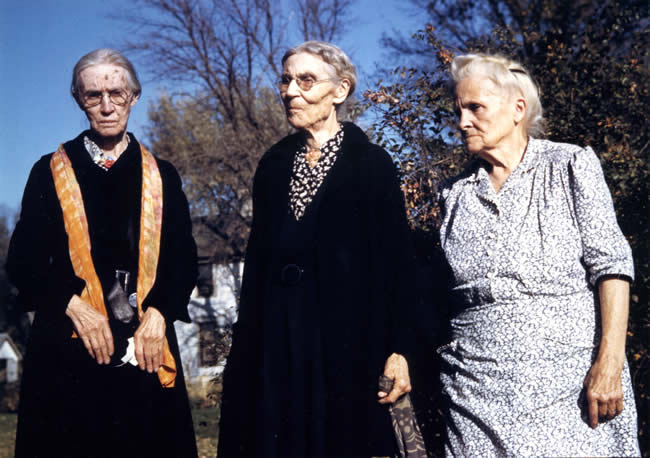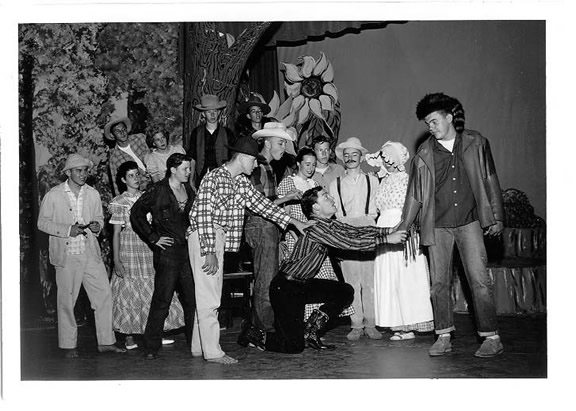“Uncle John
Rutledge’s Deer Rifle” – An Exegesis by Brad Smith
October 2008
|
|
| Granddad
(Earl William Smith, b. 1891 in Trenton, Nebraska) provides an “Explanatory
note” at the conclusion of his account of the history of “Uncle John Rutledge’s
Deer Rifle,” (October 26, 1968) which states, “The patriarch of our particular
Rutledge branch is Great Grandfather Jacob Rutledge (b. circa 1800), one of a
dozen or so brothers bearing Bible names, and father of William and John
Rutledge.” Granddad is pictured here with
the deer rifle and Brad and Bob Smith in 1947 in front of the farm house on Avenida Hacienda in
|
 |
I’m going to
begin this account with Jacob Rutledge’s father (Granddad’s Great-Great
Grandfather), William Rutledge (b. 1770 in
|
|
| Granddad’s
Great Grandfather, Jacob Rutledge (b. 1805 in
|
|
| Granddad’s grandfather,
William Edward Rutledge, was married to Louisa Biggs in 1857 in Perry County,
Ohio. They had seven children; the first born was Granddad’s mother, Mary
Francis “Polly” Rutledge (b. 1858 in
|
|
 |
|
| Granddad’s
mother, Mary Francis “Polly” Rutledge, married William Jarvis Smith in 1876 in
Bedford, Taylor County, Iowa. Polly’s
sister, Alice Rutledge (b. 1862), is the Aunt Alice who Granddad said had
possession of the rifle before it was found in his mother’s living room in
Sharpsburg, Iowa sometime in the 1930s. (The photograph below (c. 1945) taken in Sharpsburg or Lennox, Iowa
is of the three Rutledge sisters: Alice Rutledge, Mary Francis “Polly” Smith,
and Kate Jones.) Granddad’s
parents, William and “Polly” Smith, moved from
|
|
 |
|
| The Cousin Fann (b. 1859 in Gravity, Taylor County, Iowa) to which
Granddad refers in his account as the rightful heir to the deer rifle, was one of
Uncle John’s three daughters. Cousin Fann is believed to be the first female to graduate from
|
|
| Granddad’s
mother died in 1945 in
|
|
| Granddad bequeathed custodianship of the deer rifle to his son and our Dad, Robert T. Smith and “successive legatees.” He died in 1969 and Dad assumed custodianship of the rifle. Dad died in 1995 and the rifle passed into the care of his son, Robert Smith, who will in turn pass the conservation of the rifle to his son, Michael Smith. | |
| One of the
reasons Bob asked me to prepare this documentation (or provenance) is to note
the use of the rifle in the 1958 Senior Play at Van Nuys High School. I played the village idiot with the rifle in
hand in the production of
|
|
 |
|
Poor Lo
Granddad
writes that, “Without doubt, the old gun was exposed to the sullen features of
a wandering Indian from time to time, but never aimed at Poor Lo.” The image of "Poor Lo" first
appeared in 1734 in Alexander Pope's "An Essay on
Lo! the poor Indian, whose untutor'd mind
Sees God in clouds, or hears him in the wind;
His soul, proud science never taught to stray
Far as the solar walk, or milky
way;
No
longer a significant threat to those moving west, the image of the Indian as
stupid, indolent, unsophisticated, or profligate gained currency in the late
19th and early 20th centuries. The tarnished Indian image conveyed by the term “Poor Lo” could be
applied to an individual Indian or a tribe that had, for example, squandered
sudden wealth from oil revenues.
|
|